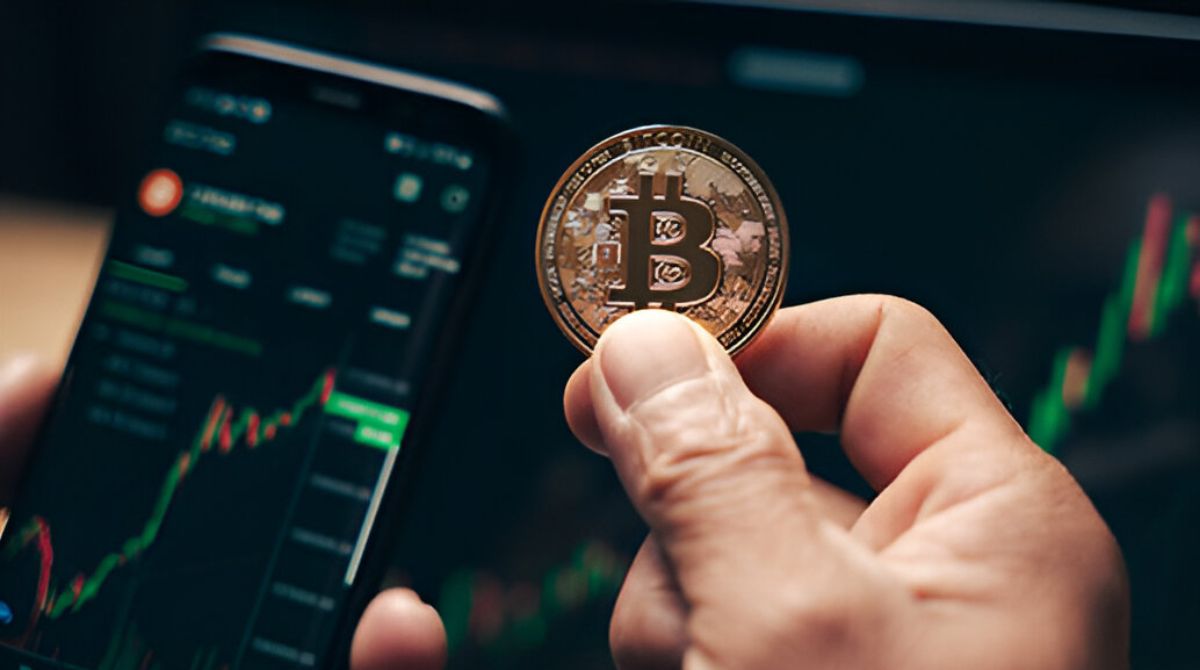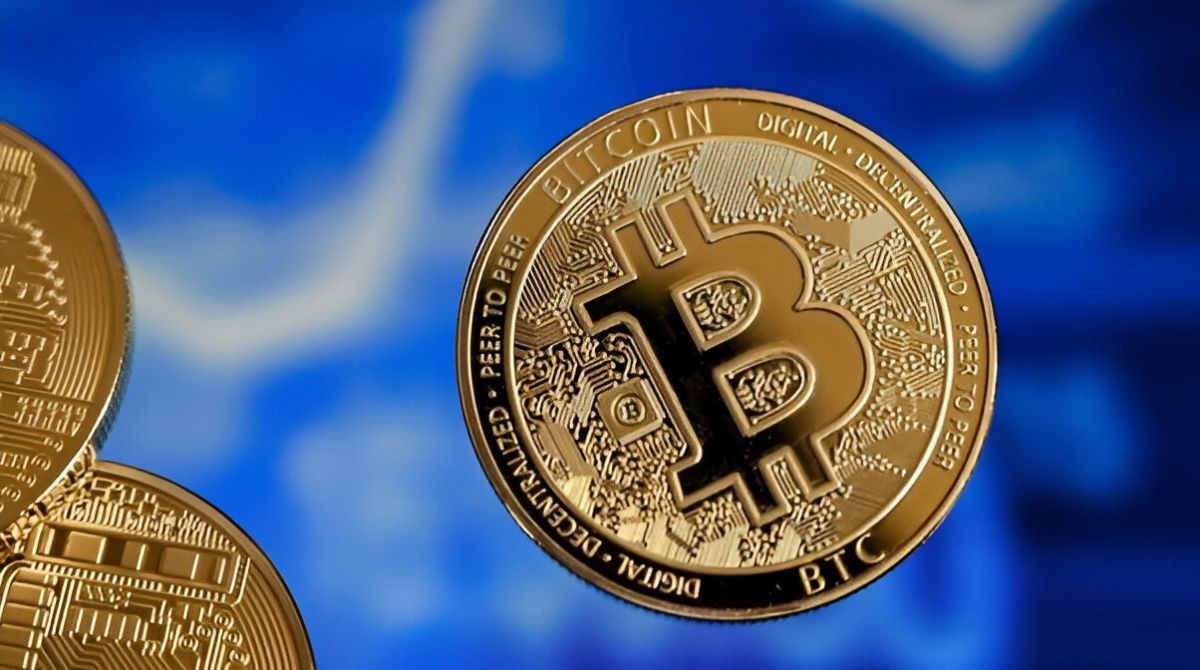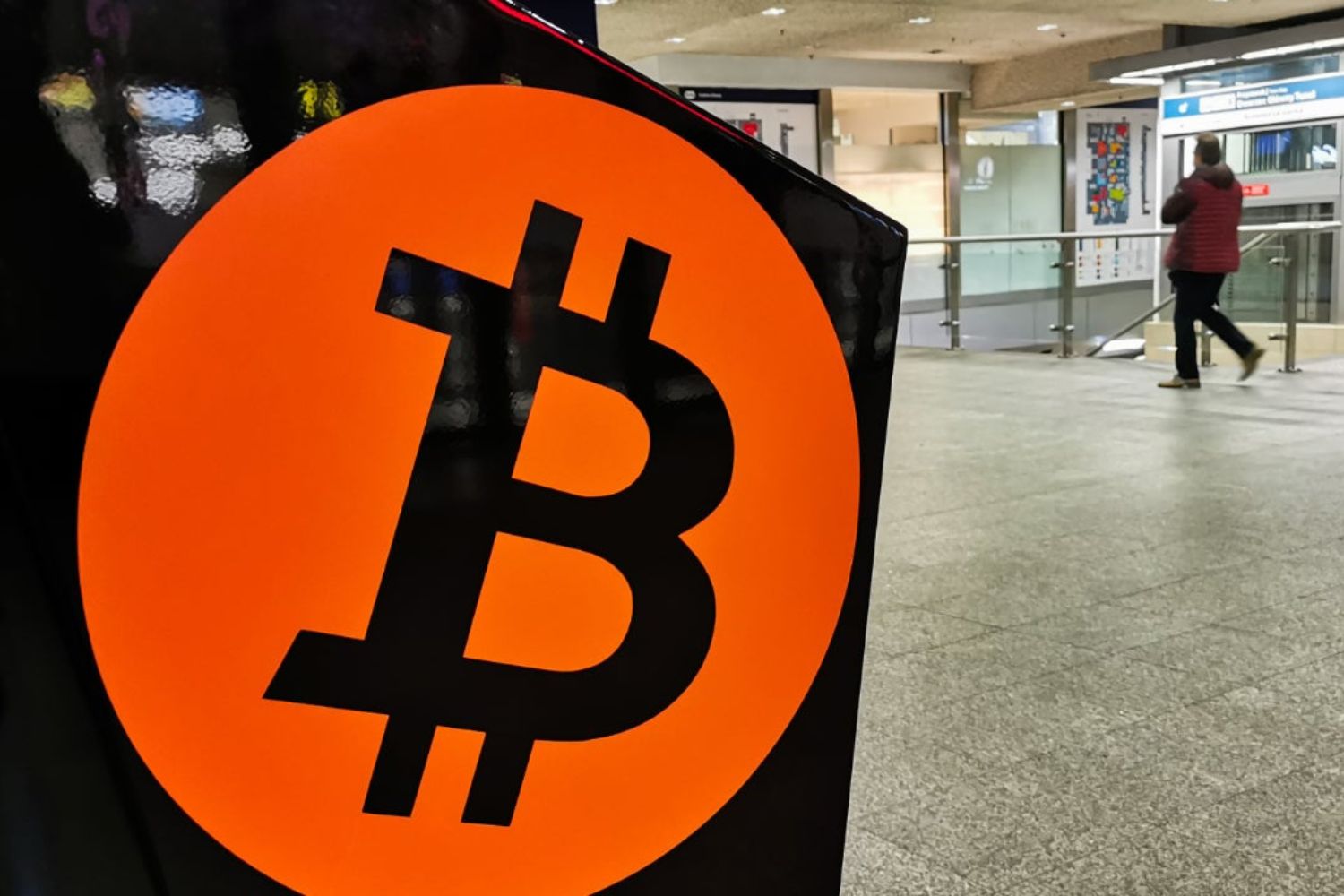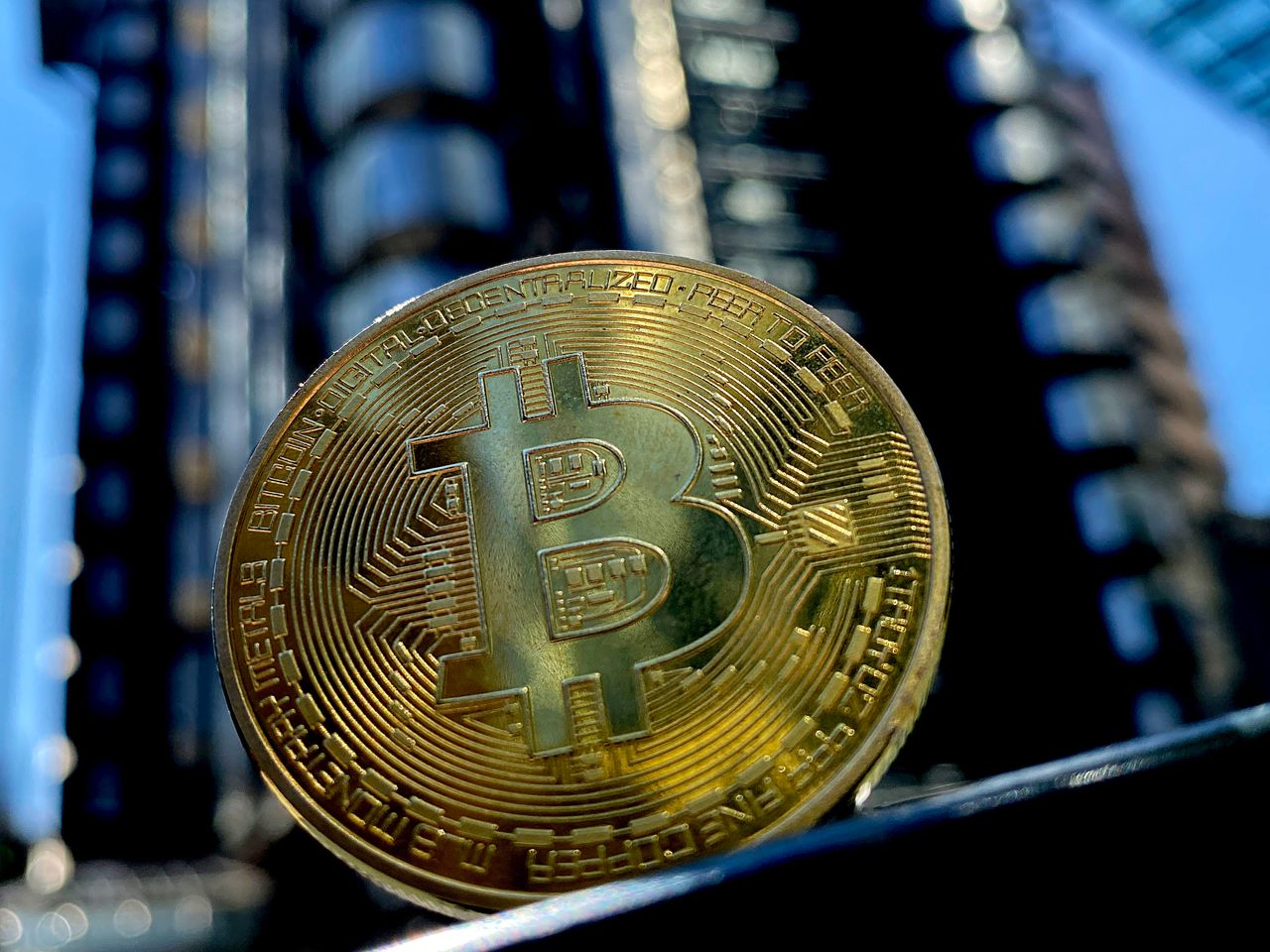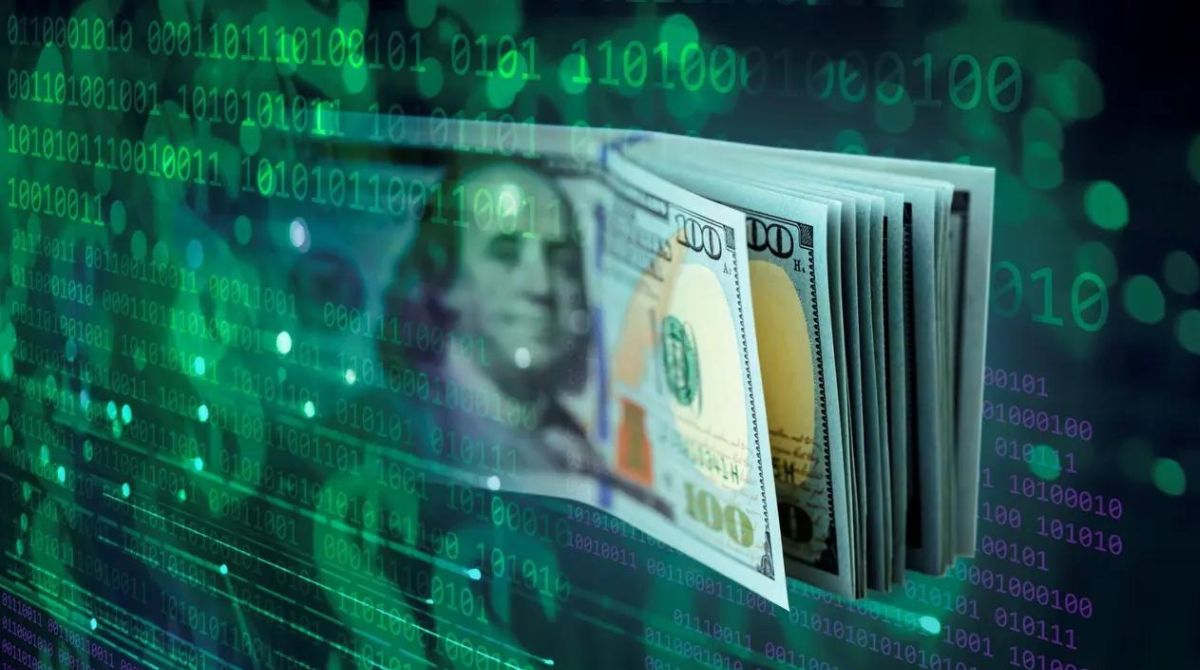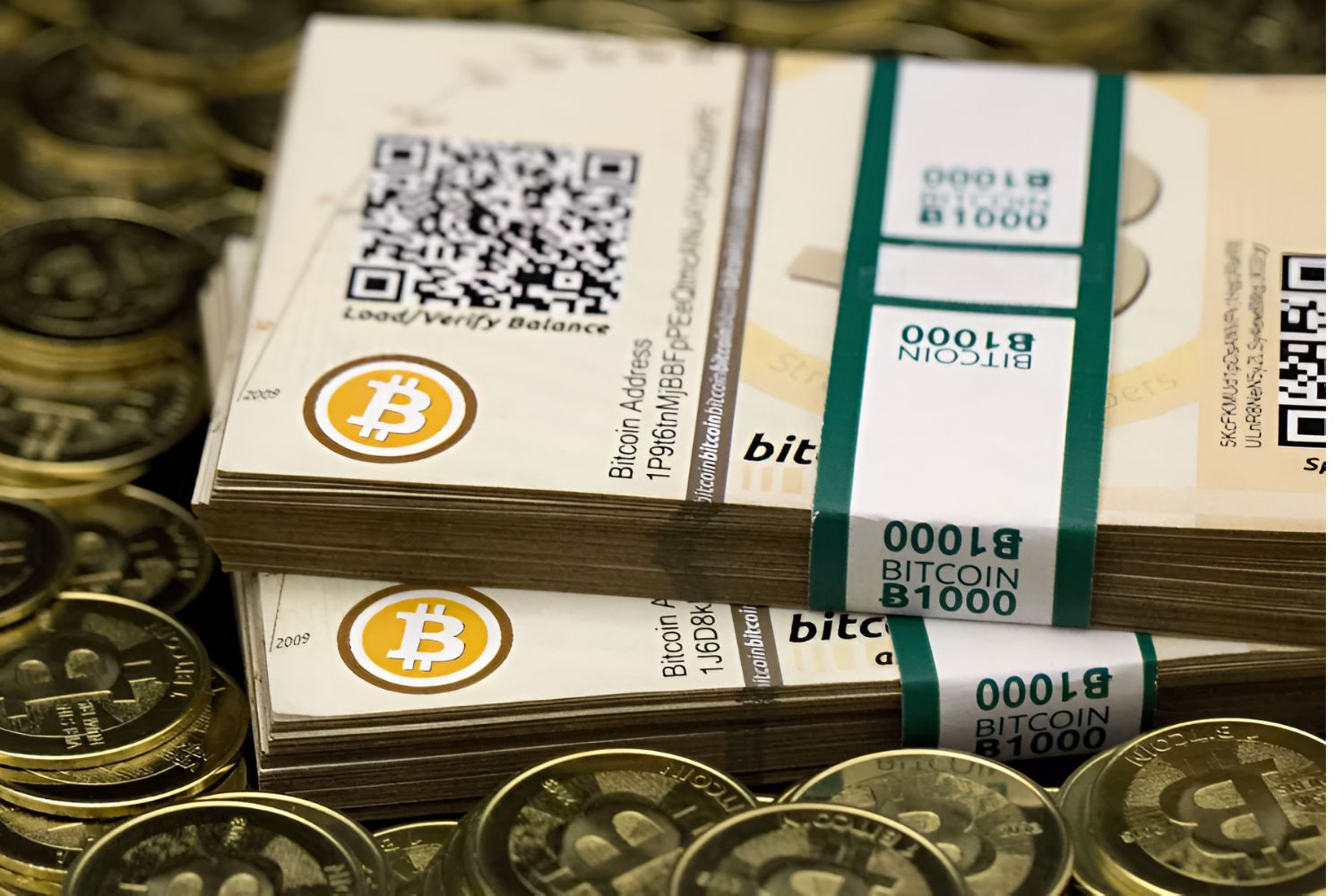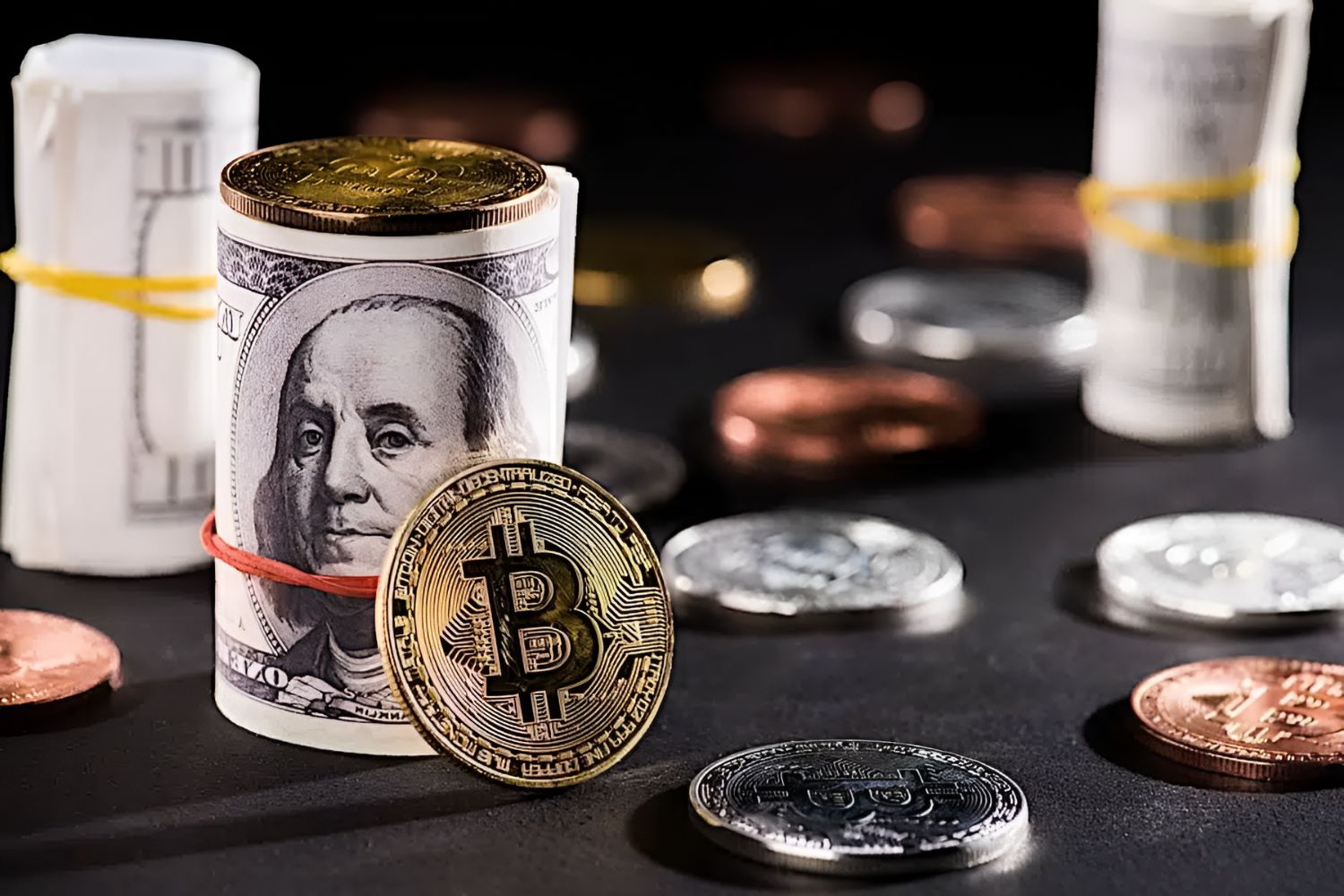Introduction
Welcome to the world of Bitcoin! Whether you are a beginner looking to learn more about this digital currency or someone who wants to dive deeper into the intricacies of Bitcoin, you have come to the right place.
Bitcoin, introduced in 2009 by an anonymous person or group using the name Satoshi Nakamoto, is a decentralized digital currency that operates on a peer-to-peer network. It is not controlled by any government or financial institution, making it free from the limitations and regulations of traditional currencies.
Unlike physical cash, Bitcoin exists solely in digital form. It uses cryptography to secure transactions and maintain the integrity of the network. With Bitcoin, individuals can send and receive funds globally without the need for intermediaries such as banks.
Bitcoin has gained significant popularity and mainstream recognition in recent years. It offers various advantages such as low transaction fees, faster international transfers, and increased privacy compared to traditional banking systems. Additionally, Bitcoin has proven to be an attractive investment opportunity, with its value experiencing significant growth over time.
In this guide, we will walk you through the process of getting started with Bitcoin. We will cover everything from setting up a Bitcoin wallet, buying Bitcoin, storing it securely, and using it for transactions. Whether you are looking to use Bitcoin for online payments or explore its potential as an investment, we will provide you with the information you need.
Please note that while Bitcoin presents exciting opportunities, it is also essential to understand the risks involved. Bitcoin’s value can be volatile, and it is crucial to exercise caution and make informed decisions while navigating the Bitcoin ecosystem.
So, if you are ready to embark on your Bitcoin journey, let’s dive in and learn how to use this revolutionary digital currency.
What is Bitcoin?
Bitcoin is a revolutionary digital currency that operates on a decentralized network, allowing individuals to transact directly with one another without the need for intermediaries. Unlike traditional currencies, which are controlled by central banks and governments, Bitcoin operates on a peer-to-peer network known as the blockchain.
The blockchain is a public ledger that records all Bitcoin transactions. This decentralized nature ensures transparency and security, as transactions are verified by a network of computers called miners. These miners solve complex mathematical problems to validate transactions and add them to the blockchain.
One of the key features of Bitcoin is its scarcity. There will only ever be 21 million Bitcoins in existence, making it a deflationary currency. This feature, combined with its decentralized nature, has led many to see Bitcoin as a store of value and a potential hedge against inflation.
Bitcoin can be divided into smaller units known as satoshis, named after the pseudonymous creator of Bitcoin, Satoshi Nakamoto. Each Bitcoin is divisible into 100 million satoshis, making it highly divisible and suitable for microtransactions.
One of the primary use cases of Bitcoin is as a digital currency for everyday transactions. More and more businesses are starting to accept Bitcoin as a payment option, allowing users to buy goods and services using this decentralized currency.
Additionally, Bitcoin has gained popularity as an investment asset. Its limited supply and increased adoption have led to significant price appreciation over time. Many investors see Bitcoin as a hedge against traditional fiat currencies and a potential investment for the future.
Bitcoin’s security is ensured through the use of cryptography. Each Bitcoin transaction is secured with a unique private key, which is only known to the owner of the Bitcoin. This private key is essential for accessing and spending the Bitcoin. It is crucial to keep this key safe and secure to prevent unauthorized access to your funds.
Overall, Bitcoin represents a paradigm shift in the world of finance. It offers a peer-to-peer alternative to traditional banking systems, providing individuals with greater control over their finances and transactions. Its decentralized nature, limited supply, and potential for growth have made Bitcoin a highly sought-after digital currency.
Getting Started
If you’re ready to embark on your Bitcoin journey, here are the essential steps to get started:
- Educate Yourself: Before diving into Bitcoin, it’s crucial to educate yourself about its concepts, technology, and potential risks. Understand how Bitcoin works, the basics of cryptography, and familiarize yourself with terms like blockchain, wallets, and private keys.
- Choose a Bitcoin Wallet: A Bitcoin wallet is a digital application or device used to store and manage your Bitcoin. There are various types of wallets available, including software wallets, hardware wallets, and online wallets. Research different wallet options and choose one that suits your needs in terms of security and convenience.
- Secure Your Wallet: Since Bitcoin transactions are irreversible, it’s crucial to secure your wallet to prevent unauthorized access. Set up a strong password and consider enabling two-factor authentication for an added layer of security. Additionally, regularly backup your wallet to protect yourself against data loss.
- Obtain Bitcoin: Now that you have a wallet, you need to obtain Bitcoin. There are several ways to acquire Bitcoin: you can buy it from a reputable cryptocurrency exchange using fiat currency, receive it as payment for goods or services, or even mine it by participating in the Bitcoin network’s validation process. Choose a method that suits your preferences and local regulations.
- Understand Bitcoin Security: Bitcoin security is of paramount importance. Familiarize yourself with best practices such as never sharing your private keys, being cautious of phishing attempts, and regularly updating your wallet software to leverage the latest security features. Stay informed about potential threats and scams in the crypto space.
- Start Using Bitcoin: Once you have obtained Bitcoin, you can start using it for various purposes. Explore online merchants who accept Bitcoin as a payment option, experiment with peer-to-peer transactions, or consider using Bitcoin for remittances or cross-border transfers. Remember to double-check the recipient’s Bitcoin address when sending funds to avoid any errors.
Remember, the world of Bitcoin can be complex, so take your time to understand the fundamentals and build your knowledge. Seek out reputable sources, join online communities, and stay updated with the latest developments in the Bitcoin ecosystem. With the right knowledge and precautions, Bitcoin can offer exciting opportunities for financial independence and innovation.
Setting Up a Bitcoin Wallet
A Bitcoin wallet is your digital gateway to the world of Bitcoin. It allows you to securely store, send, and receive Bitcoin. Setting up a Bitcoin wallet is a crucial step in your Bitcoin journey. Here’s how you can get started:
- Choose the Right Type of Wallet: There are several types of Bitcoin wallets available, each with its own benefits and drawbacks. Software wallets, such as desktop or mobile wallets, are convenient and accessible options. Hardware wallets, like USB devices, offer enhanced security by keeping your private keys offline. Online wallets, also known as web wallets, are accessible from any device with an internet connection. Research different wallet types and choose one that aligns with your priorities regarding security, convenience, and accessibility.
- Download or Install the Wallet Software: Once you have chosen the type of wallet that suits your needs, you need to download or install the wallet software. Software wallets can be found on the official websites of the wallet providers or through app stores for mobile wallets. Follow the instructions provided to download and install the wallet software on your preferred device.
- Create a New Wallet: After installing the wallet software, you’ll need to create a new wallet. The process may vary depending on the wallet provider, but it typically involves creating a strong password and possibly setting up additional security measures like two-factor authentication. Be sure to follow the instructions provided by the wallet software and keep your password and backup phrases secure.
- Backup Your Wallet: Once your wallet is created, it’s essential to back it up. Most wallets will provide you with a backup phrase or seed words. This is a set of words that can be used to restore your wallet if your device is lost, damaged, or stolen. Write down the backup phrase and store it in a secure place, preferably offline. Losing access to your wallet without a backup can result in permanent loss of your Bitcoin.
- Secure Your Wallet: Enhancing the security of your Bitcoin wallet is essential. Consider enabling additional security features provided by the wallet software, such as two-factor authentication, biometric authentication, or encryption. Regularly update your wallet software to leverage the latest security patches and features. Avoid sharing your private keys or backup phrases with anyone, as this could compromise the security of your Bitcoin.
- Get Your Bitcoin Address: Once your wallet is set up and secured, you will be assigned a unique Bitcoin address. This address is a long string of alphanumeric characters that serves as your identifier for receiving Bitcoin. You can share your Bitcoin address with others who want to send Bitcoin to you.
Setting up a Bitcoin wallet is an important step in your Bitcoin journey. Take the time to research and choose a wallet that meets your needs in terms of security and convenience. Remember to follow best practices to protect your wallet and keep your Bitcoin safe. With a properly set up wallet, you can start exploring the vast world of Bitcoin and experience the freedom of decentralized digital currency.
Buying Bitcoin
Now that you have set up your Bitcoin wallet, you may be wondering how to acquire Bitcoin. There are several methods available to buy Bitcoin, depending on your location and preferences. Here are some common ways to purchase Bitcoin:
- Cryptocurrency Exchanges: One of the most popular methods to buy Bitcoin is through cryptocurrency exchanges. These online platforms allow users to buy and sell Bitcoin using fiat currency or other cryptocurrencies. Choose a reputable exchange that operates in your country and offers secure trading services. Some well-known exchanges include Coinbase, Binance, and Kraken.
- Peer-to-Peer (P2P) Trading: P2P platforms connect buyers and sellers directly, eliminating the need for an intermediary. These platforms allow individuals to trade Bitcoin with others in their local area or globally. LocalBitcoins and Paxful are examples of P2P trading platforms that facilitate direct transactions between buyers and sellers.
- Bitcoin ATMs: Bitcoin ATMs are physical machines that allow users to buy Bitcoin using cash or debit cards. These ATMs operate similarly to regular ATMs but provide the functionality to purchase Bitcoin. Locate a Bitcoin ATM near you using online directories or mobile apps, and follow the instructions provided on the machine to complete the purchase.
- Bitcoin Debit Cards: Some companies offer Bitcoin debit cards that are linked to your Bitcoin wallet. These cards allow you to load funds onto the card and make purchases at merchants that accept regular debit and credit cards. The cards automatically convert your Bitcoin into the local currency at the time of purchase.
- OTC (Over-the-Counter) Trading: OTC trading involves direct transactions between two parties, typically facilitated by a broker or a trusted intermediary. OTC trading is suitable for large-scale Bitcoin purchases and for individuals seeking personalized assistance and guidance throughout the buying process.
Regardless of the method you choose, it’s important to consider factors such as fees, security, and reputation when selecting a platform or service to buy Bitcoin. It’s advisable to start with small transactions and gradually increase your involvement as you become more comfortable with the process.
When buying Bitcoin, you will need to provide your Bitcoin wallet address to receive the purchased Bitcoin. Ensure that you double-check the address to avoid any mistakes that could result in the loss of your funds.
Remember, the price of Bitcoin can be volatile, so it’s essential to keep track of current market trends and consider your buying decision accordingly. As with any investment, it’s important to do thorough research and only invest what you can afford to lose.
By using a reputable and secure method to buy Bitcoin, you can acquire this digital currency and start participating in the decentralized financial ecosystem that it offers.
Storing Bitcoin
Once you’ve acquired Bitcoin, it’s crucial to store it securely to protect your investment. Bitcoin is a digital asset, and unlike physical currencies, it cannot be physically stored. Instead, Bitcoin is stored in digital wallets. Here are some important considerations for storing your Bitcoin:
- Choose the Right Wallet: Select a wallet that aligns with your security needs. There are different types of wallets available, such as software wallets, hardware wallets, and paper wallets. Software wallets are convenient and accessible, while hardware wallets offer enhanced security by keeping your private keys offline. Paper wallets involve printing out your private keys on a piece of paper and storing it securely.
- Backup Your Wallet: Regularly backing up your Bitcoin wallet is crucial. Most wallets will provide you with a backup phrase or seed words—a set of words that can be used to restore your wallet in case of loss or damage. Write down the backup phrase and store it in a safe place, offline and away from unauthorized access. Losing access to your wallet without a backup could result in permanent loss of your Bitcoin.
- Protect Your Private Keys: Private keys are the cryptographic codes that allow you to access and spend your Bitcoin. Safeguard your private keys by keeping them secure and confidential. Never share your private keys with anyone, as this could provide unauthorized access to your Bitcoin. Consider using a password manager or secure hardware devices that store and encrypt your private keys.
- Enable Additional Security Measures: Many wallets offer additional security features such as two-factor authentication (2FA) and multi-signature functionality. Enable these features for added layers of protection to secure your Bitcoin. Two-factor authentication requires a second form of verification, like a code sent to your phone via SMS or a dedicated app, before you can access your wallet.
- Stay Up to Date: Keep your wallet software and any associated apps up to date. Developers regularly release updates with security patches and improvements. Updating your wallet ensures that you have the latest features and protection against potential vulnerabilities or exploits.
- Be Wary of Phishing Attempts: Be cautious of phishing attempts and avoid clicking on suspicious links or downloading unknown files. Scammers may try to trick you into revealing your private keys or sensitive information. Always double-check the URL of your wallet site and ensure you are visiting the legitimate one.
Remember, storing Bitcoin securely is paramount to protect your investment. By choosing the right wallet, backing up your wallet, protecting your private keys, enabling additional security measures, and staying vigilant against potential threats, you can minimize the risks associated with storing Bitcoin.
Lastly, always be mindful of the security of the devices on which you access your Bitcoin wallet. Keep your computers, smartphones, and other devices secure by using up-to-date antivirus software and avoiding untrusted networks or public Wi-Fi networks when accessing your wallet.
By following these best practices, you can store your Bitcoin with confidence and ensure that your digital assets are safe from unauthorized access or loss.
Sending and Receiving Bitcoin
One of the core functionalities of Bitcoin is the ability to send and receive funds between addresses. Whether you need to make a payment or receive Bitcoin from someone else, here’s what you need to know about sending and receiving Bitcoin:
- Sending Bitcoin:
- Open your Bitcoin wallet and locate the “Send” or “Send Bitcoin” option.
- Enter the recipient’s Bitcoin address. Be careful to double-check the address to avoid any errors, as Bitcoin transactions are irreversible.
- Specify the amount of Bitcoin you want to send. You may also have the option to select the transaction fee, which determines the priority of your transaction in the network.
- Review the transaction details and confirm the sending process. Depending on your wallet, you may need to enter your wallet password or provide additional verification.
- Once you confirm the transaction, it will be broadcasted to the Bitcoin network for verification. Miners will validate and confirm the transaction, and it will be added to the blockchain.
- Receiving Bitcoin:
- Share your Bitcoin address with the sender. This address is a long string of alphanumeric characters, usually provided in the form of a QR code for easy scanning.
- The sender will initiate a transaction from their wallet and specify your Bitcoin address as the recipient.
- Once the transaction is initiated, it will be broadcasted to the Bitcoin network for verification. Miners will verify the transaction and add it to the blockchain.
- Once the transaction is confirmed, the Bitcoin will appear in your wallet balance. You can view the transaction details and monitor the status of incoming transactions within your wallet.
- Use a Secure Wallet: Choose a reputable and secure wallet to store your Bitcoin. Consider using hardware wallets, which keep your private keys offline and offer excellent protection against online threats.
- Keep Your Software Updated: Regularly update your wallet software and any associated apps or plugins. Developers often release updates that address security vulnerabilities and improve the overall functionality of the wallet.
- Secure Your Private Keys: Private keys are the cryptographic codes that grant access to your Bitcoin. Store your private keys in a safe place and consider using encryption or password-protection methods to protect them.
- Enable Two-Factor Authentication (2FA): Two-factor authentication provides an additional layer of protection for your wallet. By enabling 2FA, you will need to provide a second form of verification, such as a code sent to your phone or a dedicated app, before accessing your Bitcoin.
- Be Cautious of Phishing Attempts: Phishing is a common method used by hackers to steal sensitive information. Be vigilant and avoid clicking on suspicious links or downloading files from untrusted sources. Always double-check the URLs of websites and ensure you are accessing the legitimate wallet provider.
- Use Strong Passwords: Choose strong and unique passwords for your wallet and associated accounts. Avoid using easily guessable passwords and consider utilizing a password manager to securely store and manage your passwords.
- Backup Your Wallet: Regularly backup your wallet and store the backup file or seed words in a safe and secure location. This allows you to restore your wallet in case of device loss or a software malfunction.
- Protect Your Devices: Ensure that the devices you use to access your wallet, such as computers, smartphones, and tablets, are secure. Use up-to-date antivirus software, avoid installing unknown or suspicious applications, and be cautious when connecting to public Wi-Fi networks.
- Keep a Low Profile: Avoid sharing excessive information about your Bitcoin holdings publicly. By maintaining a low profile, you reduce the risk of becoming a target for hackers or potential scams.
- Stay Informed: Continuously educate yourself about the latest security practices and potential vulnerabilities in the Bitcoin ecosystem. Stay updated on security news, follow reputable sources, and participate in online communities to learn from others and share insights.
- Educate Yourself: Before diving into Bitcoin trading, take the time to educate yourself about the basics of trading, market analysis, and risk management strategies. It is essential to have a solid understanding of the market dynamics and the factors that can influence Bitcoin’s price.
- Choose a Trading Platform: Select a reputable cryptocurrency exchange or trading platform that offers Bitcoin trading. Consider factors such as security, liquidity, fees, and available trading tools. Popular exchanges for trading Bitcoin include Coinbase, Binance, and Bitstamp.
- Create an Account: Sign up for an account on the trading platform of your choice. Provide the necessary personal information, complete any verification processes, and set up two-factor authentication (2FA) for added security.
- Develop a Trading Strategy: A trading strategy outlines the rules and criteria you will follow when making trading decisions. It can include factors such as entry and exit points, risk tolerance, and position sizing. Define your strategy based on your goals, risk appetite, and trading style.
- Monitor the Market: Keep a close eye on the Bitcoin market and stay informed about market trends, news events, and other factors that can impact Bitcoin’s price. Use technical analysis tools, such as charts and indicators, to identify potential entry and exit points for your trades.
- Manage Your Risks: Trading Bitcoin carries risks, including price volatility and the potential for loss. Set a budget for your trading activities and never invest more than you can afford to lose. Implement risk management techniques such as setting stop-loss orders to limit potential losses.
- Practice with Demo Accounts: Many trading platforms offer demo accounts that allow you to practice trading without risking real funds. Utilize these accounts to test your trading strategies, understand the platform’s features, and gain experience before trading with real money.
- Keep Records: Maintain detailed records of your trades, including entry and exit points, trade sizes, profits, and losses. This information will help you analyze your trading performance, identify areas for improvement, and make informed decisions in the future.
- Continuously Learn and Adapt: The cryptocurrency market is dynamic and ever-evolving. Stay updated with the latest news, market trends, and trading strategies. Continuously learn from your trading experiences and adapt your approach as needed to improve your trading results.
- Find Bitcoin-Accepting Merchants: Look for online merchants or service providers that accept Bitcoin as a payment method. Many e-commerce platforms, travel agencies, gift card marketplaces, and online service providers now offer the option to pay with Bitcoin. Some well-known companies that accept Bitcoin include Microsoft, Overstock, and Shopify.
- Choose a Wallet: To make payments with Bitcoin, you’ll need a Bitcoin wallet. Choose a reliable and easy-to-use wallet that supports transaction functionality. Software wallets, such as mobile or desktop wallets, are convenient options for everyday use.
- Scan the Merchant’s QR Code: When making a purchase, the merchant will usually provide a QR code that contains their Bitcoin wallet address and the payment amount. Use your Bitcoin wallet’s built-in scanner to scan the QR code or copy the address to your clipboard.
- Enter the Details: In your Bitcoin wallet, select the option to send Bitcoin and paste the merchant’s wallet address or scan the QR code. Enter the payment amount in Bitcoin or your local currency equivalent. Review the transaction details carefully before proceeding.
- Confirm and Send: Once you have reviewed the transaction details, confirm the payment. Depending on your wallet, you may need to enter your wallet password or provide additional verification. Once the transaction is confirmed and broadcasted to the Bitcoin network, the payment is complete.
- Monitor the Status: After making the payment, you can monitor the status of the transaction within your Bitcoin wallet. Depending on network congestion, it may take some time for the transaction to be confirmed by miners and added to the blockchain. Once confirmed, the merchant will typically acknowledge the payment and process your order or provide the requested service.
- Be Mindful of Transaction Fees: Bitcoin transactions involve small fees to incentivize miners to include them in the blockchain. The fee amount may vary depending on network congestion and your desired transaction speed. Consider adjusting the fee level based on your urgency for the payment.
- Keep Records: It is recommended to keep records of your Bitcoin payment transactions. Save confirmation emails or receipts provided by merchants as proof of payment. Maintaining these records may be helpful for accounting purposes or in the event of any disputes or issues with your purchases.
- Educate Yourself: Before integrating Bitcoin payments into your business, educate yourself about how Bitcoin works, its benefits and risks, and the necessary steps to accept it. Familiarize yourself with the technical aspects, payment processors, and security practices related to Bitcoin transactions.
- Set Up a Bitcoin Wallet: To accept Bitcoin, you’ll need to set up a Bitcoin wallet. Choose a wallet that suits your needs, such as a software wallet or a payment processor’s wallet. Ensure that it provides functionality to generate unique Bitcoin addresses for each transaction, which enhances privacy and tracking.
- Display Bitcoin Payment Information: Make it clear to your customers that you accept Bitcoin as a payment method. Display the Bitcoin logo, along with instructions on how customers can make payments using Bitcoin, on your website, in-store, or on invoices. Provide a manual payment option for customers who prefer to pay with Bitcoin outside of your typical checkout process.
- Choose a Payment Processor: Consider partnering with a reputable Bitcoin payment processor. These services integrate with your existing payment infrastructure and handle the technical aspects of Bitcoin transactions, such as generating payment addresses, managing the transaction process, and converting Bitcoin to your preferred fiat currency if desired.
- Set Prices in Fiat Currency: You can choose to set your product prices in your local fiat currency and offer a Bitcoin conversion option during checkout. This helps protect your business against Bitcoin’s price volatility while still giving customers the flexibility to pay with Bitcoin.
- Monitor Transactions and Process Orders: Regularly monitor your Bitcoin wallet or use the reporting tools provided by your payment processor to track incoming Bitcoin payments. Once a payment is received, verify its confirmation on the blockchain, and process the customer’s order or provide the requested service.
- Manage Exchange Rate Risk: Bitcoin’s value is volatile, so it’s important to manage exchange rate risk. You can choose to convert received Bitcoin payments to your preferred fiat currency immediately or hold onto them and convert them at a later time. Consider the risks and benefits of each approach and make an informed decision based on your business needs.
- Communicate Security Measures: Assure your customers that their Bitcoin transactions are secure by communicating the security measures you have in place. Implement standard security practices, such as using secure wallets, enabling two-factor authentication, and regularly updating your software.
- Stay Informed: Stay up-to-date with the latest developments in the Bitcoin ecosystem, including new regulations, industry news, and security best practices. Join relevant online communities and forums to learn from other merchants and share insights.
When you want to send Bitcoin to someone, follow these steps:
To receive Bitcoin, follow these steps:
It’s important to note that Bitcoin transactions may take some time to be confirmed. The confirmation time depends on the network congestion and the transaction fee you select. Higher transaction fees generally result in faster confirmation times.
Additionally, it’s crucial to double-check the recipient’s Bitcoin address before sending funds. Bitcoin transactions are irreversible, meaning that once the funds are sent, they cannot be reversed or refunded. Verifying the address helps ensure that you are sending Bitcoin to the intended recipient and prevents any errors or potential loss of funds.
By understanding the process of sending and receiving Bitcoin and taking necessary precautions, you can make seamless transactions and participate in the decentralized financial ecosystem that Bitcoin offers.
Securing Your Bitcoin
As a holder of Bitcoin, it is crucial to prioritize the security of your digital assets. Bitcoin is highly valuable and, being a decentralized digital currency, it lacks the protections offered by traditional financial institutions. Here are some essential measures to secure your Bitcoin holdings:
By implementing these security measures and maintaining a proactive approach to protecting your Bitcoin, you can significantly reduce the risk of unauthorized access and potential loss of your digital assets. Remember, securing your Bitcoin is your responsibility, and investing time in securing your holdings will provide you with peace of mind and confidence in the safety of your assets.
Trading Bitcoin
Bitcoin has gained popularity not just as a digital currency but also as an investment asset. Trading Bitcoin involves buying and selling Bitcoin with the goal of profiting from price fluctuations. Here are some important considerations if you are interested in trading Bitcoin:
Trading Bitcoin can be a rewarding endeavor, but it also comes with risks. It is important to approach trading with caution and ensure you understand the potential risks involved. Take the time to establish a trading plan, educate yourself, and gain practical experience before engaging in live trading.
Always remember that the cryptocurrency market is highly volatile, and prices can change rapidly. It is important to make informed decisions based on careful analysis to maximize your chances of success in Bitcoin trading.
Using Bitcoin for Payments
Bitcoin was originally designed as a peer-to-peer digital currency, allowing individuals to transact directly with one another without the need for intermediaries. Today, it remains a popular choice for online payments due to its global accessibility and low transaction fees. If you’re looking to use Bitcoin for payments, here’s what you need to know:
Note that while Bitcoin is accepted by numerous merchants, its usage is still not as widespread as traditional payment methods. Therefore, it is advisable to verify the merchant’s reputation and reliability before making a payment with Bitcoin to ensure a smooth transaction experience.
Using Bitcoin for payments offers advantages such as faster international transactions, reduced reliance on traditional financial institutions, and increased privacy. However, due to its volatility, it is recommended to convert your desired payment amount to Bitcoin just before making the payment to minimize any potential price fluctuations.
By understanding the process and following these guidelines, you can leverage Bitcoin’s digital currency features to make secure and convenient online payments.
Accepting Bitcoin as a Merchant
Accepting Bitcoin as a merchant can open up new opportunities for your business, allowing you to tap into a global customer base and potentially reduce transaction costs. If you’re considering accepting Bitcoin as a payment method, here’s what you need to know:
By accepting Bitcoin as a payment method, you can attract a broader customer base and potentially benefit from lower transaction fees and reduced chargeback risk. However, it’s important to conduct proper research, implement security measures, and stay informed about the evolving landscape of Bitcoin payments to mitigate any potential risks.
Remember that Bitcoin payments may still be less common than traditional payment methods, so it’s essential to provide alternative payment options for customers who do not have or prefer not to use Bitcoin.
By embracing Bitcoin as a payment option, you can enhance the payment experience for your customers and position your business at the forefront of innovative financial technologies.
Conclusion
Bitcoin has revolutionized the world of finance, offering individuals a decentralized and innovative approach to digital currency. Throughout this guide, we have explored various aspects of using and navigating the Bitcoin ecosystem. From understanding what Bitcoin is and setting up a Bitcoin wallet to buying, storing, and trading Bitcoin, we have covered the essentials for getting started.
With a Bitcoin wallet in hand, you can now explore the vast opportunities that Bitcoin presents. Whether you want to make payments online, accept Bitcoin as a merchant, or engage in Bitcoin trading, it is important to educate yourself, stay informed, and prioritize security.
Remember to choose a reputable wallet provider, secure your private keys, enable additional security measures, and backup your wallet to safeguard your Bitcoin. Up-to-date software and staying vigilant against potential threats are essential steps in protecting your digital assets.
As with any investment or financial transaction, it’s important to approach Bitcoin with caution and make informed decisions. Take the time to understand market trends, conduct thorough research, and consider risk management strategies if you plan to invest or trade Bitcoin.
While Bitcoin has gained significant popularity, it is worth acknowledging that acceptance and usage may vary depending on your location and the industry you are in. It is important to be aware of regulatory and legal considerations related to Bitcoin in your country or region.
Bitcoin continues to evolve, and its potential impact on the financial landscape is yet to be fully realized. By staying informed, adapting to changes, and embracing the principles of decentralization and financial sovereignty, you can fully harness the power of Bitcoin.
Whether you choose to use Bitcoin for everyday transactions, explore it as an investment asset, or accept it as a merchant, Bitcoin offers exciting possibilities. Embrace the journey, be proactive in your approach, and enjoy the benefits of participating in the world of Bitcoin.







